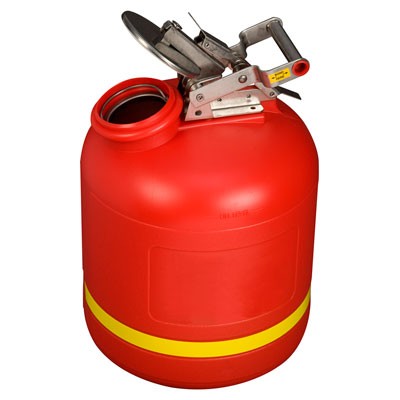Comprehensive Liquid Waste Disposal: Solutions for Residences and Organizations
Comprehensive Liquid Waste Disposal: Solutions for Residences and Organizations
Blog Article
Just How Fluid Waste Disposal Works: A Comprehensive Overview of Strategies and Technologies Employed

Summary of Liquid Waste Kind
The complexity of liquid waste types requires a complete understanding of their features and effects for disposal. Fluid waste can generally be classified right into a number of types, including industrial, municipal, farming, and unsafe waste. Each group shows distinctive buildings, calling for details monitoring approaches to minimize ecological and wellness dangers.
Industrial liquid waste originates from making processes and typically includes a series of pollutants, such as hefty metals, solvents, and organic substances. Community liquid waste, mainly making up wastewater from houses and industrial establishments, contains raw material, nutrients, and virus (industrial wastewater treatment). Agricultural liquid waste, consisting of overflow from farms, might include fertilizers, pesticides, and pet waste, positioning threats to water top quality and ecosystems
Unsafe liquid waste is defined by its poisoning, sensitivity, or potential to create injury. Understanding these varied fluid waste kinds is essential for establishing reliable disposal methods and guaranteeing compliance with ecological guidelines.
Physical Treatment Approaches

Testing is the first action, where larger fragments and particles are eliminated from the liquid waste using screens or grates. In sedimentation containers, much heavier particles settle at the base, forming a sludge layer, while the clarified fluid can be additional dealt with.
Filtration is an additional important technique that entails passing the fluid through permeable materials, such as sand or membranes, to record smaller fragments. This step boosts the quality of the liquid, making it ideal for subsequent treatment processes.

Chemical Therapy Strategies
Chemical treatment strategies are essential for successfully managing fluid waste, particularly in addressing dissolved and colloidal impurities that physical techniques might not sufficiently get rid of. These techniques use various chemical representatives to neutralize, precipitate, or transform harmful substances right into much less hazardous types.
One common approach is coagulation and flocculation, where chemicals such as alum or ferric chloride are included to promote the aggregation of suspended fragments. This process improves sedimentation, enabling easier removal of the resulting sludge. In addition, oxidation procedures, employing agents like chlorine or ozone, are utilized to break down intricate organic substances and microorganisms, rendering the waste more secure for discharge or more therapy.
Neutralization is another important technique, which changes the pH of acidic or alkaline waste streams to neutral levels, preventing prospective injury to downstream systems and the atmosphere. Additionally, progressed oxidation processes (AOPs) use combinations of oxidants and ultraviolet light to break down persistent contaminants, achieving a greater level of therapy efficiency.
Organic Therapy Procedures
Biological go therapy processes play an important role in the administration of liquid waste by using microorganisms to break down natural matter and minimize pollutant levels. These procedures can be generally classified right into cardio and anaerobic therapies, each utilizing certain microbial neighborhoods to accomplish effective waste degradation.
Aerobic therapy entails using oxygen to assist in the malfunction of organic materials by microorganisms. This procedure is frequently carried out in triggered sludge systems, where aeration containers give a helpful atmosphere for microbial look at these guys growth, leading to the oxidation of natural toxins. The resultant biomass can be separated from treated effluent via sedimentation.
On the other hand, anaerobic treatment occurs in the lack of oxygen, depending on different microorganisms to damage down organic matter. This approach is especially advantageous for high-strength waste, as it generates biogas, a renewable resource resource, while lowering sludge manufacturing. Technologies such as anaerobic digesters are regularly utilized in commercial and local applications.
Both anaerobic and aerobic biological therapies not just decrease the environmental influence of liquid waste yet also assist in source recovery, making them necessary components of sustainable waste monitoring techniques. Their adaptability, efficiency, and performance support their extensive execution across different sectors.
Emerging Technologies in Disposal
Ingenious strategies to liquid waste disposal are swiftly evolving, driven by improvements in modern technology and an enhancing focus on sustainability. Amongst these arising technologies, membrane bioreactors (MBRs) have gotten grip for their capacity to combine biological treatment with membrane filtering, leading to high-grade effluent that can be reused in various applications. MBRs allow smaller impacts and extra reliable procedures contrasted to traditional systems.
An additional encouraging advancement is making use of anaerobic food digestion incorporated with nutrient recuperation modern technologies, which not only deals with fluid waste yet additionally generates biogas and recuperates important nutrients like nitrogen and phosphorus. This double advantage you could try this out improves source effectiveness and minimizes environmental effect.
Additionally, advanced oxidation procedures (AOPs) are being taken on for the destruction of complicated organic contaminants. These methods utilize effective oxidants and stimulants to damage down pollutants at the molecular level, offering a highly reliable option for difficult waste streams.
Furthermore, the integration of expert system and maker knowing in waste management systems is maximizing functional efficiency and predictive maintenance, leading to lowered expenses and improved ecological conformity. These technologies show a significant change towards even more reliable and sustainable fluid waste disposal techniques.
Final Thought
In verdict, effective liquid waste disposal requires an extensive understanding of various methods and modern technologies. By continuously advancing these methods, it ends up being possible to attend to the expanding challenges connected with liquid waste, eventually contributing to ecological protection and resource recuperation.
Liquid waste disposal is an important aspect of environmental monitoring, needing a thorough understanding of different methods and innovations customized to various waste types. Fluid waste can broadly be categorized right into a number of types, consisting of industrial, municipal, farming, and dangerous waste. Agricultural liquid waste, including overflow from farms, may include fertilizers, chemicals, and pet waste, posturing threats to water top quality and ecological communities.
Numerous physical therapy techniques play a vital function in handling liquid waste effectively - industrial wastewater treatment.In conclusion, reliable fluid waste disposal requires an extensive understanding of various techniques and technologies
Report this page